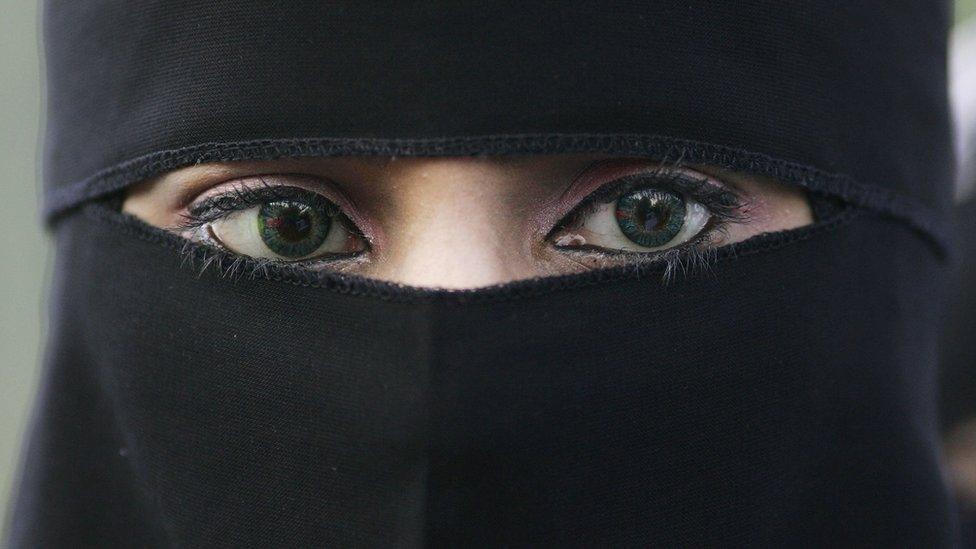Can schools ban the veil?
- Published

No-one knows how many adult women in the UK wear the full face covering known as the niqab.
But it is a minority of British Muslim women, many prefer to simply cover their hair with the hijab.
Uniform rules in state-funded schools in England tend to reflect the sensibilities of local communities, as each school determines its own policy.
Many allow the hijab and adapt their uniforms to accommodate concerns about modesty.
Now, Ofsted says head teachers are coming under pressure to relax rules that exclude full face coverings.
It will not say where or how many schools are facing this pressure, but the chief inspector of schools in England is massively raising the stakes.
On Tuesday, Sir Michael Wilshaw said a school could be judged by Ofsted inspectors as inadequate if the wearing of a full face covering was "clearly hindering communication".
It is a line in the sand.
It may be welcomed by some head teachers, if they do feel under pressure, but will also be seen as provocative.
How can you prove communication and learning is being hindered?
Case 'escalated'
Some will be asking where the research basis for this is or whether it is more about a broader cultural judgement.
The law was tested to the limits on this issue a decade ago, when the case of Shabina Begum was considered by the Law Lords.
At the beginning of a school year, as she was about to turn 14, Shabina arrived at school in what the judges described as a "long coat like garment", known as the jilbab.
It was not in the school uniform policy, on which local mosques and Muslim governors had been consulted.
Shabina was turned away. And, over the next two years, the case escalated through the court system.
In the end, the school won the argument that her right to show her religion had not been infringed, although the Law Lords were not unanimous in their decision.
One of the arguments taken into account was the potential pressure on other girls to adopt similar clothes.
But, 10 years on, it is hard to know how a similar case would be weighed up in the courts.
The Shabina Begum ruling was decided on the detailed circumstances at that school at that time.
The debate about the veil has never really gone away. Only a handful of state funded schools are thought to allow the wearing of the niqab, mainly in their sixth form.
There is no current evidence of it impeding the pupils in achieving excellence.
For a school to be rated as failing purely on the grounds of the niqab being allowed seems for the moment improbable.
But any head teacher wanting to maintain a very inclusive uniform policy will now be able to point to Ofsted and the Department for Education in backing up their policy.
- Published26 January 2016
